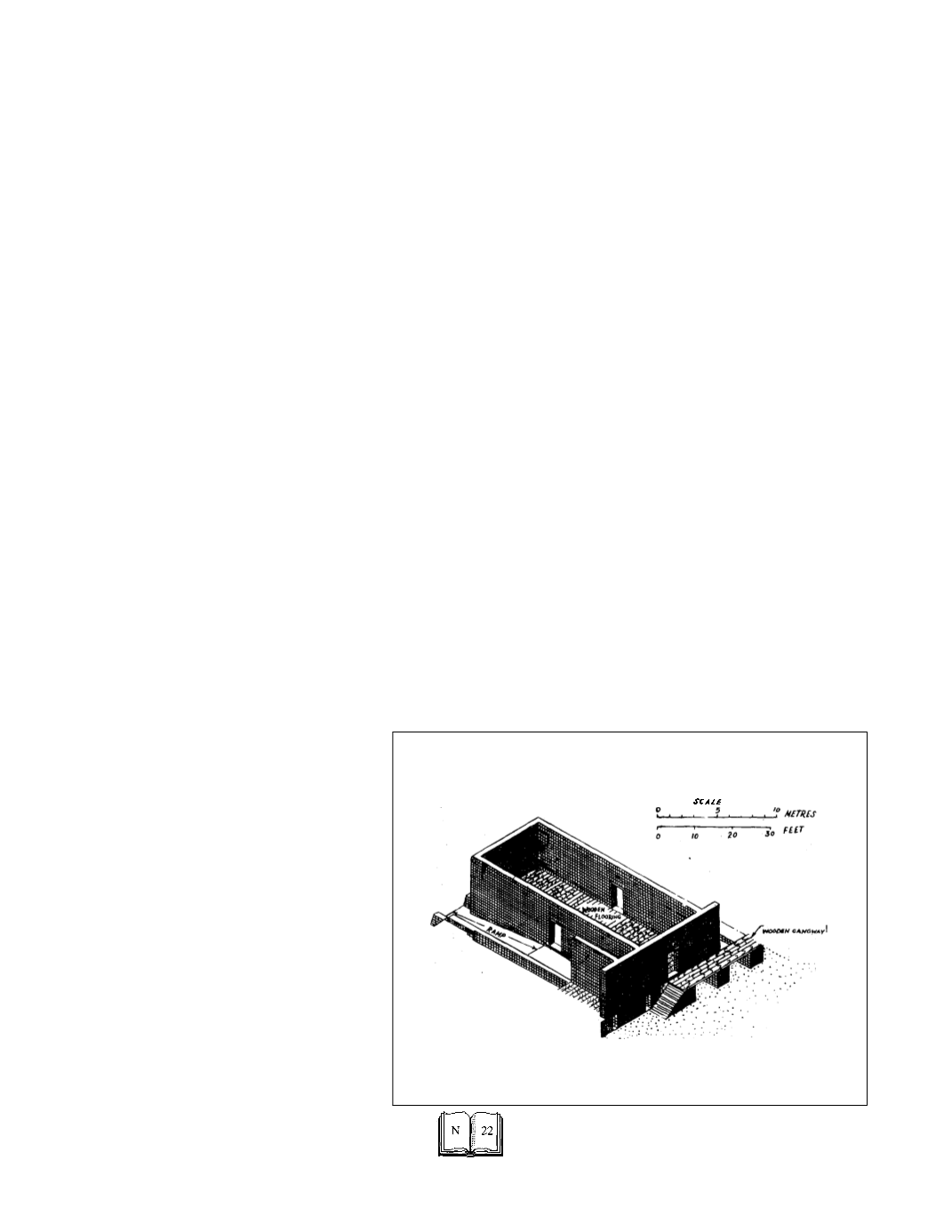

ARCHAEOLOGY
Eternal India
encyclopedia
800°C. In the course of excavation at Daimabad a few furnaces
used for melting copperbronze and dumps of slag and ash were
found. It is observed that the Debari copper mines near Udaipur
were worked more than 2000 years ago by the Aharians, who could
extract metal from ore and melt it, but were not good at casting. On
the other hand, the copper-workers of Kalyadi in Hassan District of
Karnataka could extract almost the entire metal from the ore which
is borne out by the analysis of the slag from the furnaces at the foot
of the hill. The slag contained less than 0.2% copper whereas in the
modern copper smelters 2% metal is left in the slag. The Kalyadi
technique appears superior to that of modern technique of extrac-
tion of copper (IAR 1978-79).
The Harappans obtained gold and silver from distant places eg.
gold from Afghanistan and Kolar Gold Mines in Karnataka, copper
from Khetri and perhaps Iran and Oman. The main purpose of hav-
ing settlements in Afghanistan and Tajikistan (Altin Depe) was to
have control of the source of raw material. Such considerations took
them to Bhagatrav in South Gujarat wherefrom they co.uld get
agate, carnelian, jasper and chert.
Botany and Agriculture
As early as the fifth millennium B.C. rice was grown in Ma-
hagara in Uttar Pradesh and cotton in Mehrgarh in Baluchistan.
Wheat, barley, sesame and date were used by the pre-Harappans
as well as Harappans in the third millennium B.C. Multiple cropping
was practised in Kalibangan and the plough was in use; a terracotta
model of the plough is found in Banawali. The seed-drill with
several tubes for sowing must have been known to the Harappans
as it is incised on a terracotta seal from Lothal. Gypsum was
stored in Kalibangan for reclaiming salt-charged land. It served as.
a chemical fertilizer. The granaries of Harappa and Mohenjo-Daro
are a further improvement over the granary of Mehrgarh.
Communication of Thought
The Indus Script hitherto considered undeci-
pherable has been deciphered to a very large extent
on the basis of a key provided by the Late Harappan
Script in which out of 24 cursive basic signs 17 are
identical with the Semitic alphabetic signs. In fact
the Semitic alphabet has been derived from the sim-
plified Late Harappan Script which gave rise to
Brahmi Script in the 14th -15th century B.C. The
transition phase from Indus to Brahmi alphabetic
writing can be seen in the Bet Dwaraka inscription.
But for the simplification of a partly pictographic and
partly logographic writing into an alphabetic script
the sophistication in civilization which depends on a
quick and easily understood script would not have
been possible. The greatest contribution of the Har-
appans to human progress is the alphabetic writing.
The author’s decipherment is now accepted by ex-
perts (D. Diringer 1975, 1985 De ■ Sousa; David
Frawley
1991;
Konrad
Elst
1993;
Grum-
mond 1992; Srikanth Talageri 1993) in Berkeley and
other universities. The criticism by Zvelebeil has
been squarely met by S.H.Ritti, the expert Epigra-
phist (Ritti 1985, 1-24).
Engineering
Although small towns were built in the 5th-4th millennium B.C.
they were not planned in the real sense of the term until the
Harappans took to serious town-planning with a blueprint showing
various sectors of the town and their functions. The Harappan
planning was conditioned by two factors namely the challenges
from the sea and the river and provision of maximum civic amenities
to all classes of people. Harappan cities were great industrial and
commercial centres and their prosperity depended on trade. The
raw materials for industries had to be procured from distant places
and the products had to be distributed to all corners of the Empire
and also exported to far off ports. The dichotomy of planning lay in
dividing the town into the Citadel or Acropolis and the Lower Town.
The entire town built on artificial terraces of mud bricks was divided
into a number of blocks all fifter-connected by broad and straight
roads cutting at right angles. Neatly-built underground and sur-
face drains were provided to keep the city clean. Every house had
paved bathrooms. Granaries (fig:36) were built in Harappa and
Mohenjo-Daro with necessary airvents for proper presentation of
grains. A unique contribution of the Harappan engineers to mari-
time trade is the construction of a tidal dock at Lothal (fig:9). It
could accommodate 30 to 40 ships at a time. Automatic desiltation
was ensured by providing a spillway which had a lock-gate, device.
This is the first ever example of putting to practical use one’s
knowledge of tides, waves and currents. A warehouse of 64 blocks
with airvents and wooden canopy was built near the dock. The
800m long wharf facilitated handling cargo.
Late Harappa Culture
The term Late Harappa Culture was first introduced in 1963 to
distinguish the Mature Harappa Culture from its decadent or deur-
banized phase in Rangpur, the former designated as Period IIA and
the latter as Period IIB. The next phase of Transformation of the
Late Harappa into the Lustrous Red Ware Culture was called Pe-
riod IIC. But after a large scale excavation of the mature and de-
clining phases of Harappa Culture the term Late Harappa has been
HARAPPA GRANARY:
CONJECTURAL RESTORATIONOF A ROOM
Fig : 36 -- Harappan Granaries
















